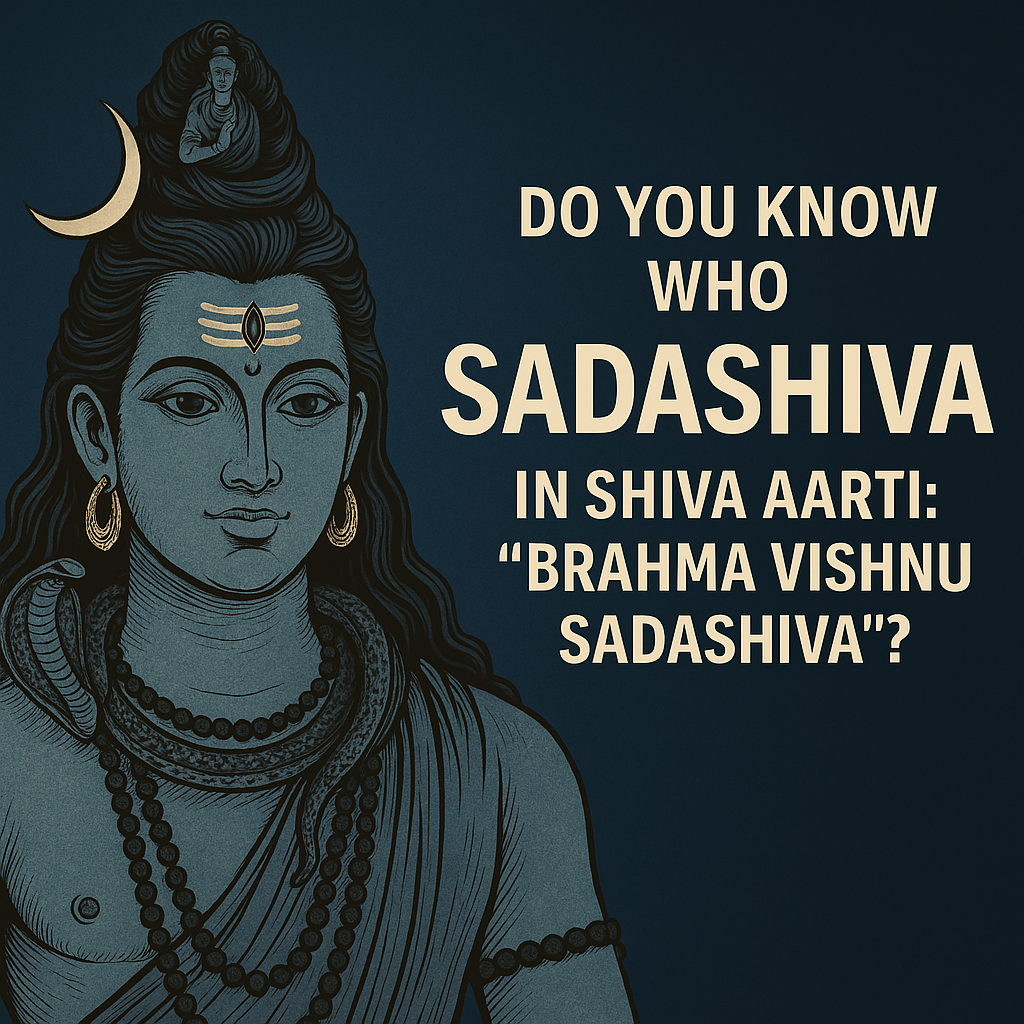
While Brahma is the creator and Vishnu is the preserver, who is Sadashiva? Is he just another form of Shiva, or does he represent something deeper? In Hindu philosophy, Sadashiva is not just a deity—he is the eternal, formless Supreme Consciousness that exists beyond creation and destruction. But how does he relate to Shakti (Durga), and who is truly supreme? Let’s explore this profound concept in depth. In Shaivism, Sadashiva (Paramashiva) is the ultimate reality, the supreme consciousness that is beyond creation and destruction. He is formless, eternal, and the source from which everything emerges, including Shakti (Durga, Parvati, Kali, etc.).
In Shaivism, Sadashiva (Paramashiva) is the ultimate reality, the supreme consciousness that is beyond creation and destruction. He is formless, eternal, and the source from which everything emerges, including Shakti (Durga, Parvati, Kali, etc.).
Thus, in this perspective, Sadashiva is the Supreme Reality, and Durga (Shakti) is His dynamic power that manifests the universe.
In Shaktism, Shakti (Durga, Adi Parashakti, Kali, etc.) is the supreme reality, and Shiva is her passive aspect.
Thus, in this perspective, Durga (Shakti) is the Supreme Reality, and Shiva is her consciousness.
From an Advaita (non-dualistic) perspective, Sadashiva (Shiva) and Durga (Shakti) are the same Supreme Consciousness appearing as two aspects:
Just as waves are not separate from the ocean, Shakti is not separate from Shiva. In the highest sense, both are one, beyond duality.
It ultimately depends on which tradition or philosophy resonates with you! 😊
Would you like to explore any particular aspect further?




It refers to the three key aspects of the divine in many Aartis:
Brahma – The Creator
Vishnu – The Preserver
Sadashiva – The Eternal Supreme Consciousness beyond birth and death
Sadashiva here represents the formless, ultimate reality, unlike the more familiar personal forms of Shiva.
In Shaivism, Sadashiva (or Paramashiva) is the highest form of God—pure, formless consciousness, beyond all dualities.
He is the source of everything, including Shakti (Durga, Parvati, Kali).
Without him, nothing can exist. He represents Purusha (consciousness), while Shakti is Prakriti (creative energy).
Shakti is Sadashiva’s power—the energy through which the universe is manifested.
Shiva is inactive without Shakti.
Shakti is the dynamic force, and Shiva is the stillness. They are inseparable—like fire and its heat, or sound and vibration.
In Shaktism, Shakti (Durga, Kali, Adi Parashakti) is the Supreme Reality.
She creates Brahma, Vishnu, and Shiva.
Shiva, in this view, is inert without her energy. Shakti is seen as the source of all, the mother of the universe.
They are different aspects of the same divine reality.
Shiva is pure consciousness.
Shakti is the manifested energy. In higher philosophy (like Advaita Vedanta), they are not separate at all, but one in essence.
That depends on your spiritual path:
Shaivism says Sadashiva is supreme.
Shaktism says Durga (Shakti) is supreme.
Advaita says both are one—there is no separation.
Because it reminds us that:
The masculine and feminine are equal and interdependent.
True divinity lies in balance, not in conflict.
Every person has both Shiva (wisdom) and Shakti (power) within.
Comments
We often live without truly knowing who we are, where we came from, or where we are meant to go. Life is more than just existence—it’s a path to realignment with the light. Through awareness, the right actions, and conscious choices, we can break free from distractions and reconnect with our higher purpose.
Discover the wisdom that guides us toward clarity, purpose, and true fulfillment. 🌿
Lorem Ipsum is simply dummy text of the printing
Copyright © 2025 birthtorebirth – All Rights Reserved.
0
Comments